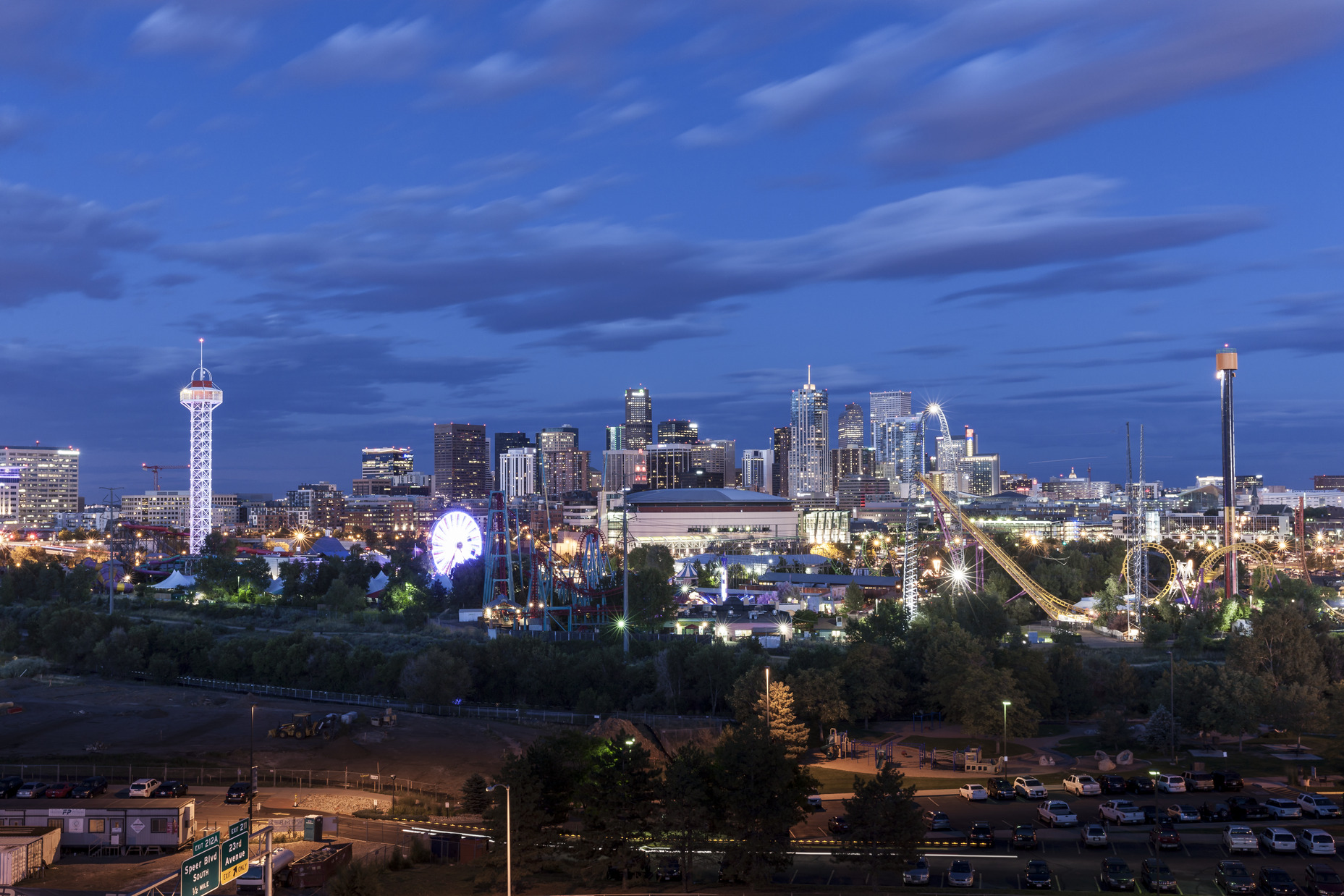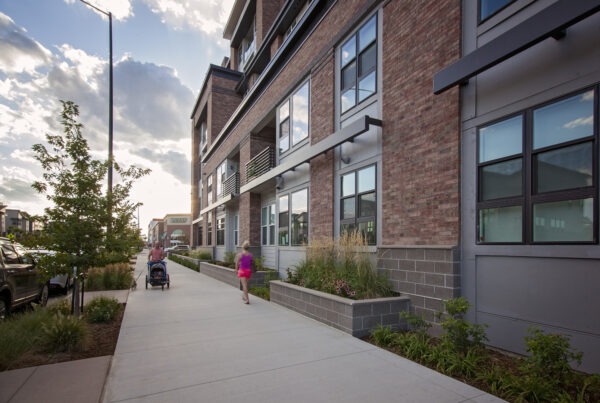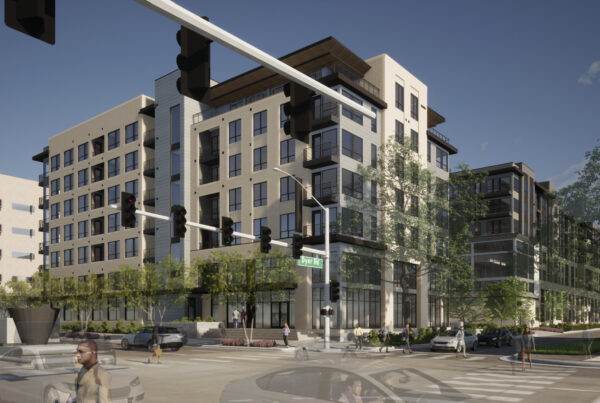Electrification is poised to change new construction in Colorado and across the nation. Heading into KEPHART’s Research and Development Day, our group wanted to examine the requirements for new electrical vehicles (EVs) in the Denver metro area. We hoped to understand how these requirements might affect our current and future projects so we could incorporate them into our design process. However, after our initial research, we found a more pressing electrification issue that could cost our clients millions of dollars in Denver: The Energize Denver Ordinance.
What is the Energize Denver Ordinance?
The Energize Denver Ordinance, according to the City of Denver’s website, will require all buildings – 25,000 square feet and larger – to submit for annual benchmarking of the building’s energy use to meet energy performance requirements based on the building’s Energy Use Intensity (EUI), and to switch from natural gas to electric when replacing space and water heating equipment. These are just some of the requirements of this ordinance on which we focused our research.
The City of Denver requires building owners to submit an annual benchmarking report by June 1 of every year. Buildings must meet or exceed target levels over the next six years, starting in 2024. Owners can receive an extension for 2025 to avoid paying fines and penalties by the city. Owners of buildings 25,000 square feet and larger should have received a letter in February 2023 confirming their 2024 and 2027 interim energy use intensity (EUI) targets and their 2030 EUI target.
Each building’s baseline and interim EUI targets are unique to that building. You can find your property and its unique building ID here. We have provided a couple of sample projects to illustrate what the Energize Denver Ordinance does to projects that require electrification.

As a side note, the State of Colorado is also moving in this direction with the ‘Energy Performance for Buildings’ statute (HB21-1286), which requires owners of commercial, multifamily, and public buildings 50,000 square feet or larger to annually benchmark their whole-building energy use and meet set building performance targets. The State’s BPS program and requirements do not supersede or replace local performance standard requirements like Denver’s, so this blog will focus on Denver’s requirements, not the state’s.
What will the Energize Denver Ordinance penalties look like for projects in the coming target years? The sample projects list each project’s current EUI and how the penalty of $0.30 X EUIs (building’s current EUI – Target EUIs) X the building’s SF are calculated.
High-Rise Example
Eight stories of Type II-A over four levels Type I-A Highrise project delivered around 2017:
Podium Example
Five stories of Type III-A over two stories Type I-A Podium project delivered around 2017:


2025: $0.30 x (56.5-50.6) = 5.9 x 350,652 SF = $620,000
2027: $0.30 x (56.5-47.4) = 9.1 x 350,652 SF = $957,000
2030: $0.30 x (56.5-44.2) = 12.3 x 350,652 SF = $1,294,000
2025: $0.30 x (56.4-48.1) = 3 x 477,638 SF = $1,189318
2027: $0.30 x (56.4-46.2) = 10.2 x 477,638 SF = $1,461,572
2030: $0.30 x (56.4-44.2) = 12.2 x 477,638 SF = $1,748,155
These sample projects illustrate what penalties could look like for projects currently designed or built with gas-fired equipment. Multifamily projects fall into (3) categories: projects currently in the design phase and have not submitted for permit, projects currently in for permit or currently being built, and existing projects. So, as a building owner, what can you do to avoid these costly penalties?
Projects in the Design Phase
The projects currently in the design phase and have not been submitted for a permit have the least impact, as your design team can pivot and adjust the design to meet these requirements. Engaging your consultants, an MEP, and an Energy Modeler is essential early in the process. The earlier, the better, and when we say earlier, that means SD, as electric equipment and systems could affect unit and utility room designs depending on what equipment is used. We spoke to MDP Engineering Group as part of our research day. Here are the design strategies and system recommendations they suggested:
Heat Pumps
- Use refrigerant and a reversing valve to provide heating and/or cooling.
- Domestic water heating.
- HVAC systems: Fan Coil Units, Water Source Heat Pumps, RTU’s and MAU’s.
Energy Recovery
- Recover energy from exhaust air stream to pre-heat the supply air stream.
- Evaporative cooling which can be highly effective in our dry Colorado climate.
Energy Modeling
- Different buildings have different requirements. Involve the mechanical engineer and energy modeler in the project early.
Projects Under Construction
The projects that are in for permit or currently being built could be the most challenging to comply depending on the selected systems. These projects will enter the program after the certificate of occupancy has been received and the building has been in operation for twelve (12) full calendar months. The annual energy benchmarking data must be submitted to the Office of Climate Action, Sustainability, and Resiliency (CASR,) and they will send the 2024, 2027, and 2030 targets within six months of receiving the first benchmark. Once you receive your benchmark data and understand your building EUI targets, you can work with the City of Denver to determine the next steps.
Existing Projects
For projects that are existing, review the equipment replacement code changes for 2023, 2025, and 2027 to understand the code updates that will be implemented in the upcoming years. Once you understand the code updates and their requirements, getting an Electrification Feasibility Report completed by a third party will help you determine your options on how to move forward. This report assesses the impact of switching from gas to electric equipment. Denver does offer rebates to cover the cost of this process. Denver also offers an electrification pilot program that helps you understand the costs, benefits, and barriers to installing electric systems in your project. They have a limited number of applications and building-type requirements for this program. These are just a couple of first steps to get you started. More information about the Energize Denver Ordinance program and how to convert from gas-fired equipment to electric in existing multi-family can be found on the City of Denver website.
This ordinance can mean significant changes to existing and under-construction buildings. It’s important to stay aware of the changes and work with the right energy professionals to comply with the ordinance. KEPHART remains dedicated to staying on top of what these changes mean for our clients and implementing them into our designs. If you have any questions, call us at 303-832-4474.






